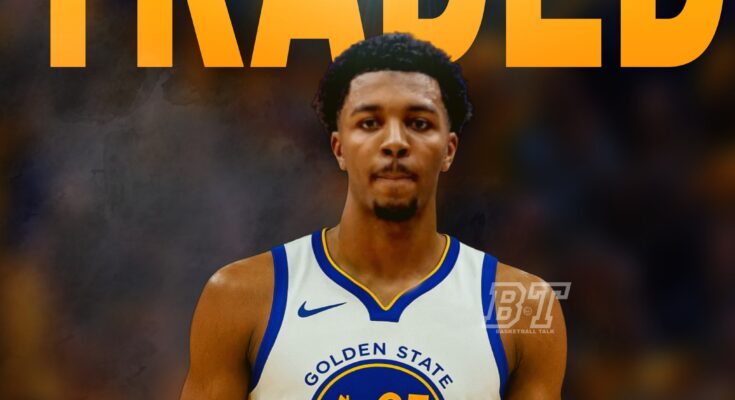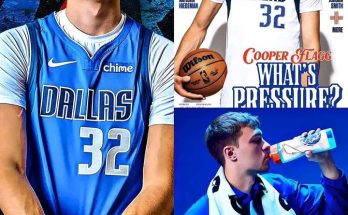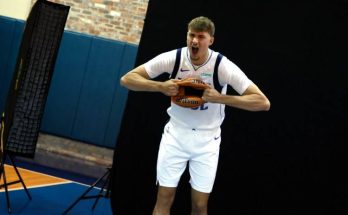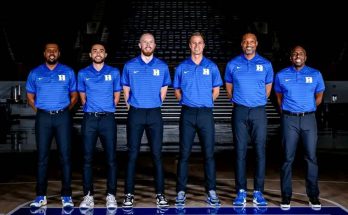The Golden State Warriors have pulled off yet another headline-grabbing move, one that could potentially reshape both their present and their future. In a deal that instantly lit up the NBA world, Trey Murphy III has been traded from the New Orleans Pelicans to the Golden State Warriors in exchange for Jonathan Kuminga and a 2028 first-round pick. It’s the kind of trade that not only alters the depth chart but also signals a shift in philosophy for both franchises involved. For Golden State, this is a bet on fit, shooting, and immediate impact; for New Orleans, it’s a gamble on potential, athleticism, and future draft capital. At its core, this deal forces everyone across the league to reconsider what each team is prioritizing and what this means for their respective championship windows.
Murphy, known for his elite three-point shooting, length, and versatility on both ends, embodies many of the qualities the Warriors have historically valued. His ability to stretch the floor, defend multiple positions, and play within a movement-heavy offense makes him a natural fit in Steve Kerr’s system. He’s not just a shooter; he’s a weapon that can warp defenses and open up driving lanes for Stephen Curry, Klay Thompson, and Draymond Green. At 6-foot-9, Murphy’s length and athleticism also make him an ideal complement in small-ball lineups that the Warriors have made famous, giving them a two-way wing who can guard bigger forwards while punishing teams with his perimeter stroke. In many ways, Murphy checks the boxes Golden State has been missing since the days when Harrison Barnes was at his peak in their system, or even when Kevin Durant elevated the offense into an untouchable juggernaut.
However, acquiring a player like Murphy came at a cost, and the Warriors paid it in the form of Jonathan Kuminga and a future first-round pick. Kuminga was widely considered one of Golden State’s brightest young prospects, a player whose athleticism, scoring upside, and defensive versatility gave him the potential to blossom into a star. But despite flashes of brilliance, Kuminga never seemed to fully find his place in the Warriors’ system. His ball-dominant style, preference for isolation play, and inconsistent shooting didn’t always mesh with Golden State’s pass-heavy offense. At times, it seemed like the Warriors were struggling to balance their commitment to winning now with their desire to develop Kuminga into a long-term cornerstone. This trade feels like a resolution to that tension—Golden State opted for a player who fits more cleanly with their timeline and system, rather than continuing to wait for Kuminga’s star turn.
For New Orleans, the move is about betting on upside and shaking up a roster that has been talented on paper but inconsistent in execution. Kuminga gives them an explosive wing who can run in transition alongside Zion Williamson, CJ McCollum, and Brandon Ingram. His ability to attack the rim, finish through contact, and defend multiple positions could give the Pelicans a different dynamic, especially if he continues to improve as a shooter and decision-maker. Adding a 2028 first-round pick sweetens the deal, giving the Pelicans more flexibility down the line if they decide to pursue another trade or restructure their roster. With Ingram’s future always looming as a question mark in New Orleans, this move also gives them insurance—Kuminga has the raw tools to be a centerpiece in case of bigger changes.
From Golden State’s perspective, this trade signals that they are not done chasing championships. Even as their dynasty core ages, they’ve shown a willingness to make bold moves to maximize what remains of Curry’s prime. Murphy is not a superstar, but he doesn’t need to be; his skill set perfectly complements the Warriors’ strengths. Curry draws gravity like no other player in NBA history, Thompson remains a lethal shooter, and Draymond continues to orchestrate the defense and playmaking. Adding Murphy gives them another floor-spacer who can also cut, defend, and thrive in the chaos of Golden State’s offensive system. It’s about optimizing what they already do well, and in that regard, this is a highly calculated gamble.
The ripple effects of this trade will be fascinating to watch. Golden State’s rotation looks deeper and more balanced, with Murphy sliding into a role that allows the team to lean less heavily on Thompson and Andrew Wiggins. He can give them fresh legs, versatility, and a level of shooting consistency that Kuminga couldn’t yet provide. Meanwhile, the Pelicans take on the challenge of developing Kuminga into something greater. If he blossoms into the star many believe he can be, they might end up with the best player in the deal. But if he stalls in his development, then the Pelicans risk losing the dependable shooting and spacing that Murphy gave them—a critical element for a team built around a paint-dominant star like Zion.
Financially, the trade also makes sense in the grander picture of the Warriors’ roster-building challenges. They’ve been stuck in luxury tax complications, forced to think carefully about how to balance veterans with younger talent. By moving Kuminga and his looming contract situation, they avoid the uncertainty of committing long-term money to a player who hasn’t yet proven he can be consistently trusted. Murphy, meanwhile, gives them more clarity—he’s already an established role player with room to grow, and his skill set ensures he’ll retain value whether as a starter or as a rotational weapon.
There’s also the cultural aspect to consider. Golden State has always valued players who buy into their system, who move the ball, play defense, and make the extra pass. Murphy fits that mold better than Kuminga, whose tendency to isolate and force plays often led to frustration among coaches and teammates. By making this move, the Warriors are doubling down on their identity, ensuring that everyone on the roster complements their established style of play. It’s a subtle but important point—fit can sometimes matter as much as raw talent, especially on a team with championship aspirations.
For the league as a whole, this deal could shift the balance of power in the Western Conference. The Warriors were already a dangerous playoff team, capable of pulling off upsets when healthy. Adding Murphy gives them an edge, a new wrinkle that opposing defenses will have to account for. He’ll make life easier for Curry, punish double teams, and give Kerr more flexibility in crunch-time lineups. Meanwhile, New Orleans adds more athleticism and youth, which could help them maintain energy across the grind of an 82-game season. But the question remains—does losing Murphy’s shooting make it harder for Zion and Ingram to operate inside? The Pelicans will have to hope Kuminga develops quickly, or else they risk spacing issues that could clog their offense.
Narratively, this trade will be remembered based on what happens in the playoffs. If Murphy helps the Warriors make another deep run, his addition will be hailed as a masterstroke, another example of Golden State knowing exactly how to maximize their core. If Kuminga breaks out into a star with New Orleans, the story could shift toward Golden State giving up too early on a young, explosive talent. That’s the beauty and the risk of trades like this—neither side will know the true outcome for years.
For now, though, what we do know is that Trey Murphy III is a Warrior, Jonathan Kuminga is a Pelican, and the NBA’s landscape just shifted once again. It’s the kind of trade that excites fans, fuels debates, and underscores the reality that in the modern NBA, teams can’t afford to stand still. Golden State is once again making moves to chase glory, while New Orleans is gambling on potential and the long view. Time will tell who got the better end of the deal, but one thing is certain: the league will be watching closely.
The Warriors’ pursuit of sustained excellence has always been marked by their willingness to evolve. Whether it was bringing in Durant to push them over the top, or reshaping their bench with veterans to support their stars, they have consistently shown that no move is too bold if it helps them contend. Murphy represents the latest chapter in that story, a reminder that even in the twilight of Curry’s career, Golden State refuses to fade quietly. They are still here, still chasing, still reloading. And for the Pelicans, this is a chance to redefine their trajectory, to see if Kuminga can be the kind of talent that elevates them from playoff hopefuls to legitimate contenders.
In the end, trades like this embody the tension at the heart of the NBA: the balance between winning now and building for the future. Golden State chose the present, doubling down on fit and immediate impact. New Orleans chose the future, gambling on potential and flexibility. Only time will reveal who made the right call, but until then, fans and analysts alike will dissect every shot Murphy takes in a Warriors uniform and every highlight dunk Kuminga throws down in New Orleans. That’s the beauty of a blockbuster deal—it creates storylines that stretch far beyond the initial transaction, shaping narratives and rivalries for years to come.



